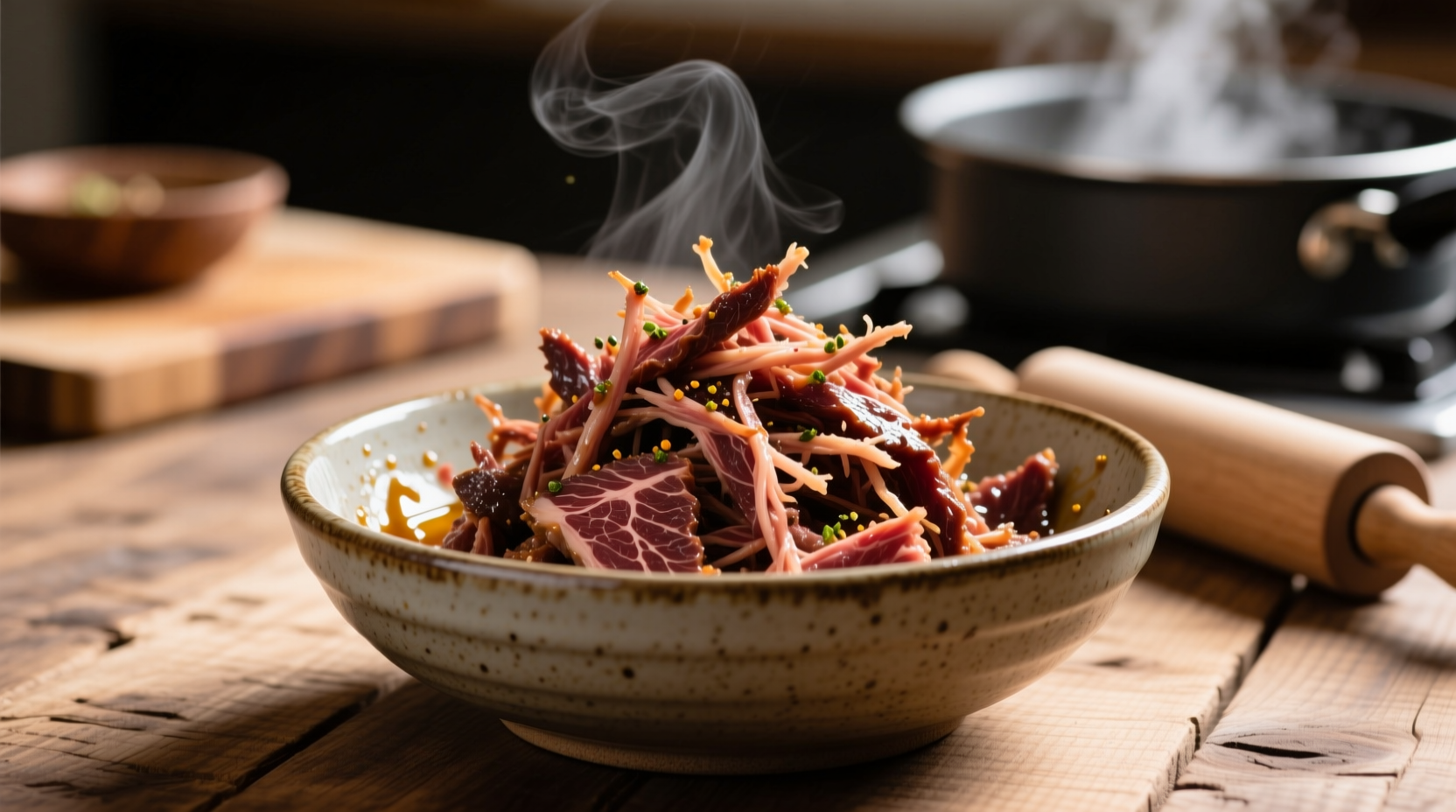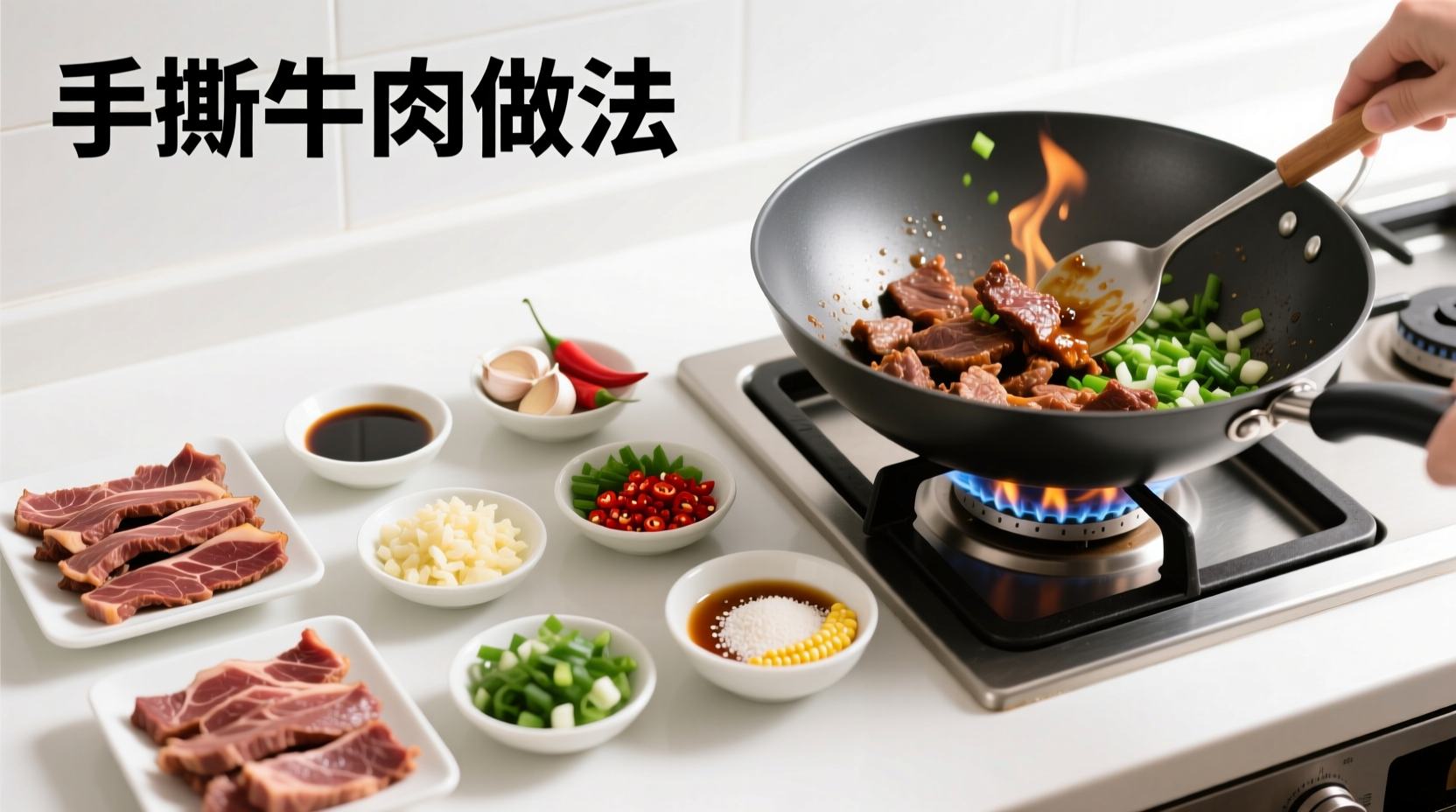Want restaurant-quality shredded beef that falls apart with a fork and bursts with flavor? This comprehensive guide reveals the science-backed techniques professional chefs use to transform inexpensive cuts into melt-in-your-mouth perfection. Whether you're making tacos, sandwiches, or Asian stir-fries, these methods guarantee succulent results every time.
Why Certain Cuts Work Best for Shredded Beef
Selecting the right cut is the foundation of perfect shredded beef. Tougher cuts with abundant connective tissue like chuck roast, brisket, or shoulder roast contain collagen that breaks down during slow cooking into gelatin, creating that signature tender texture. Leaner cuts like sirloin will dry out and become stringy. The USDA Meat and Poultry Hotline confirms that "cuts from the shoulder and chuck areas work best for slow cooking methods" (USDA Food Safety).
| Cooking Method | Time Required | Texture Result | Best For |
|---|---|---|---|
| Slow Cooker | 6-8 hours | Ultra-tender, moist | Beginners, hands-off cooking |
| Pressure Cooker | 90 minutes | Firm yet shreddable | Time-pressed cooks |
| Oven Braising | 3-4 hours | Rich caramelized edges | Maximum flavor development |
Essential Equipment and Ingredients
You don't need specialty tools, but these make the process easier:
- Heavy-bottomed pot or Dutch oven for even heat distribution
- Meat thermometer (critical for food safety)
- Two forks or meat claws for effortless shredding
- Slotted spoon for fat removal
For flavor building, use a 3:1 ratio of liquid to acid (like broth:tomato paste or beer:vinegar). The National Center for Home Food Preservation recommends maintaining proper acidity levels to prevent bacterial growth during extended cooking times.
Step-by-Step Shredded Beef Preparation
Preparation Phase: Building Flavor Foundations
Dry the meat surface thoroughly with paper towels—this critical step enables proper browning. Season generously with coarse salt 1 hour before cooking to allow penetration. Sear in hot oil (350°F) for 3-4 minutes per side until deeply browned. This Maillard reaction creates complex flavor compounds that simmering alone cannot achieve.
Cooking Process: Temperature Control Secrets
After searing, add liquid to cover meat halfway (never fully submerging). Maintain a gentle simmer at 180-200°F—bubbles should barely break the surface. Higher temperatures cause muscle fibers to contract, squeezing out moisture. The FDA Food Code specifies that beef should reach 145°F internal temperature with a 3-minute rest, but for shredding, continue cooking to 195-205°F where collagen fully converts to gelatin.
Shredding Technique: Avoiding Common Mistakes

Remove meat from liquid and let rest 15 minutes. Shred against the grain using two forks—this shortens muscle fibers for maximum tenderness. Reserve cooking liquid, skim fat, then reduce by half to create a concentrated sauce that coats the meat without making it soggy.
Regional Flavor Variations Worth Trying
Adapt your shredded beef to global cuisines with these authentic approaches:
- Mexican Barbacoa: Add dried guajillo chilies, cumin, and orange juice to the braising liquid
- Asian Style: Use ginger, star anise, and soy sauce with a splash of rice wine
- Carolina BBQ: Incorporate apple cider vinegar and mustard for tangy pulled beef
Food historian Dr. Rachel Laudan notes that shredded beef techniques evolved differently across cultures: "Mexican barbacoa developed from indigenous pit-cooking methods, while Chinese shredded beef dishes emerged from wok cooking traditions that maximized flavor with minimal fuel."
Storage and Reheating Guidelines
Proper storage maintains texture and safety. Cool shredded beef within 2 hours of cooking. Store in airtight containers with just enough cooking liquid to coat—excess liquid makes meat soggy. Refrigerate for up to 4 days or freeze for 3 months. When reheating, always use the reserved cooking liquid rather than water to maintain flavor integrity. The USDA recommends reheating to 165°F internal temperature for food safety.
Troubleshooting Common Shredded Beef Problems
Dry or stringy meat: Undercooked collagen or wrong cut selection. Solution: Cook to 200°F+ and use well-marbled cuts.
Bland flavor: Insufficient seasoning or liquid reduction. Solution: Salt meat properly and reduce cooking liquid by 50%.
Greasy texture: Inadequate fat removal. Solution: Chill overnight and skim solidified fat before reheating.
Perfect Pairings for Your Shredded Beef
Elevate your dish with these professional pairing suggestions:
- Tacos: Double corn tortillas with pickled onions and fresh cilantro
- Sandwiches: Toasted brioche buns with smoked gouda and caramelized onions
- Rice Bowls: Jasmine rice, steamed broccoli, and fried egg with sriracha drizzle











 浙公网安备
33010002000092号
浙公网安备
33010002000092号 浙B2-20120091-4
浙B2-20120091-4